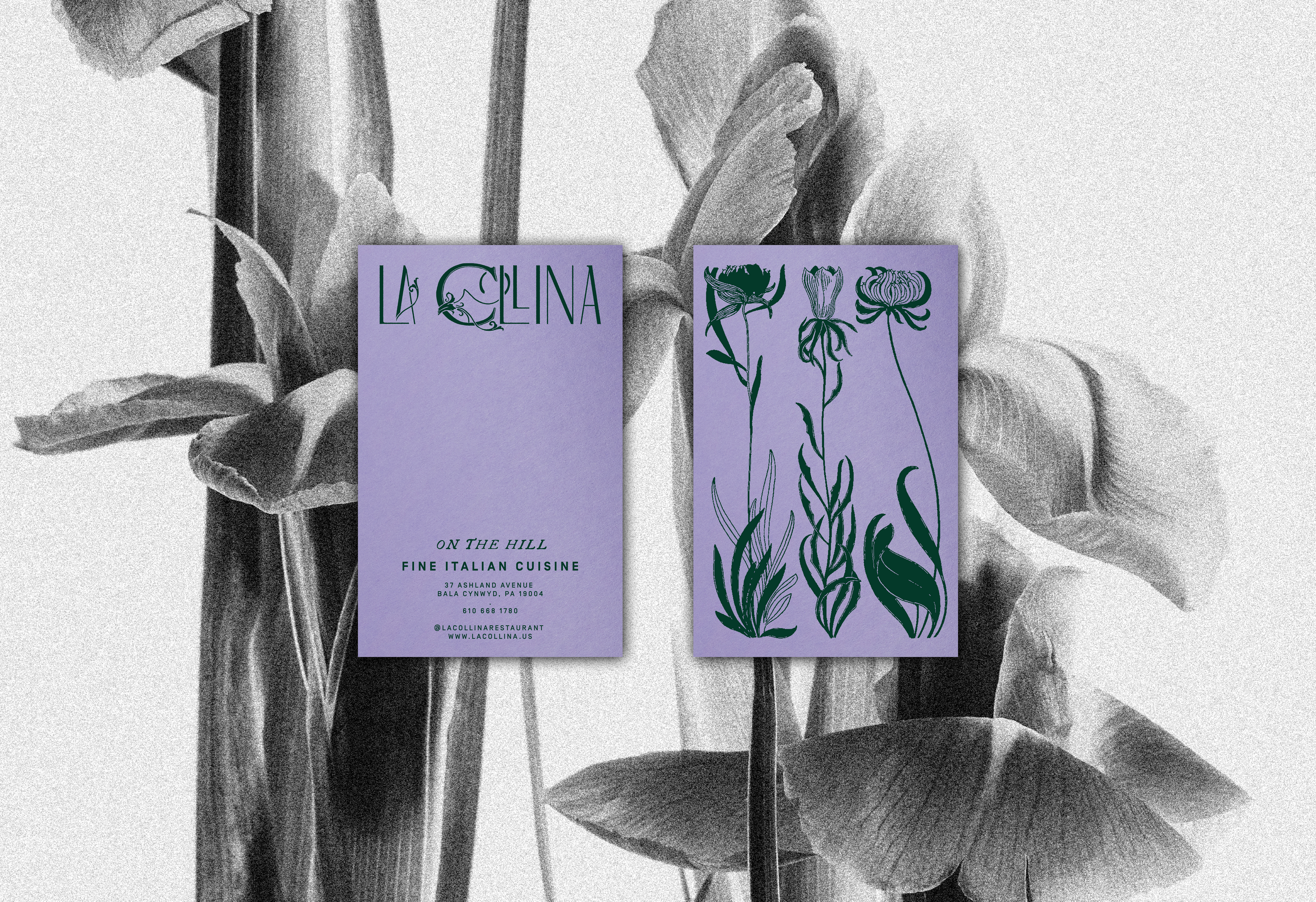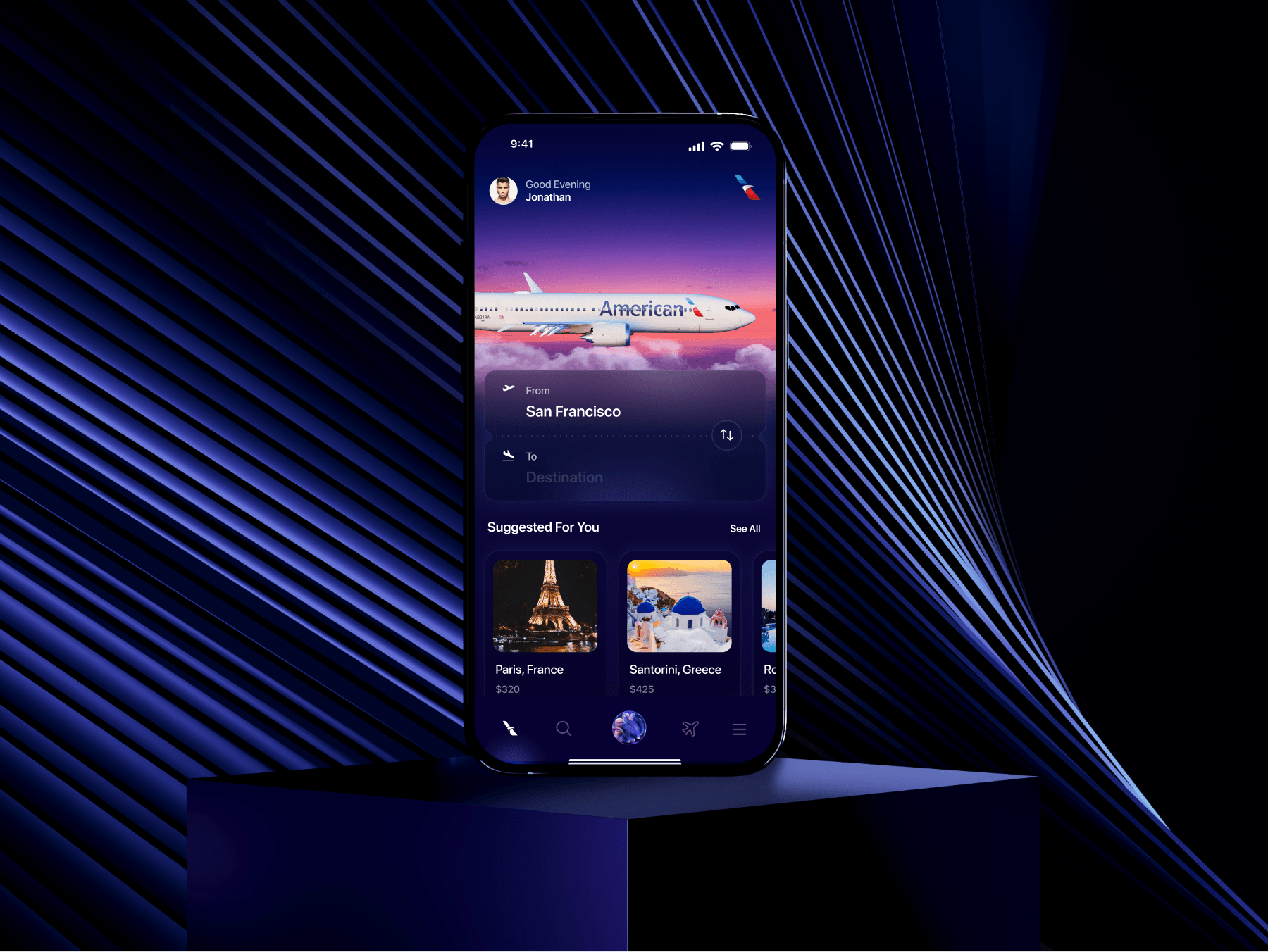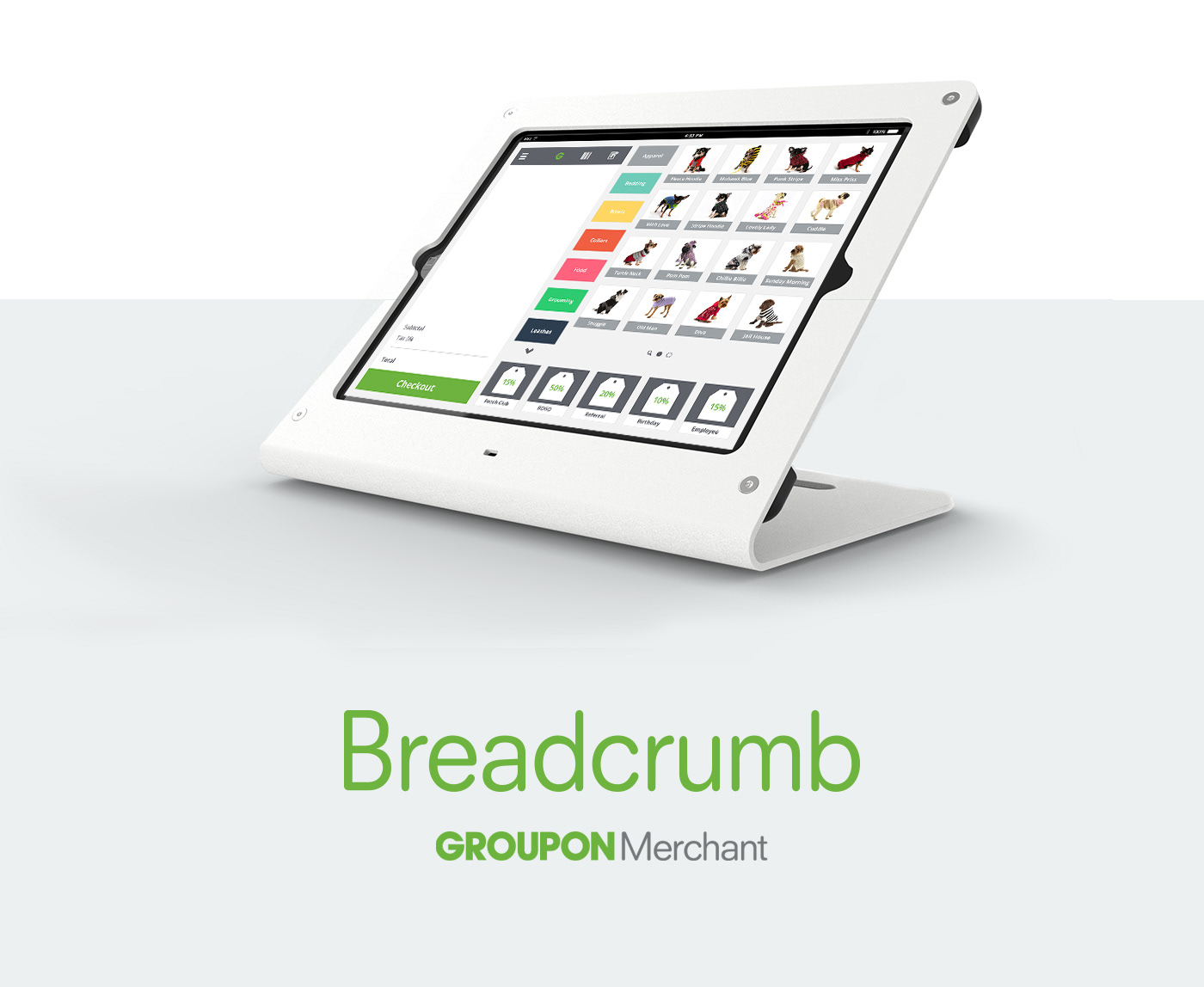
OVERVIEW
–
In May of 2014 Groupon released a fully functional hospitality point of sale platform aimed at providing local merchants sophisticated tools to run their businesses more effectively and understand their customers better. Breadcrumb helps merchants manage their operation by combining the intuitive nature of touch computing with powerful software that handles orders, payments, labor and reporting—wirelessly and in real time.
“Breadcrumb is a product that will be intertwined with the DNA of the merchant’s business and customer base"
–
KARTIK RAMACHANDRAN, Vice President, Groupon Merchant OS
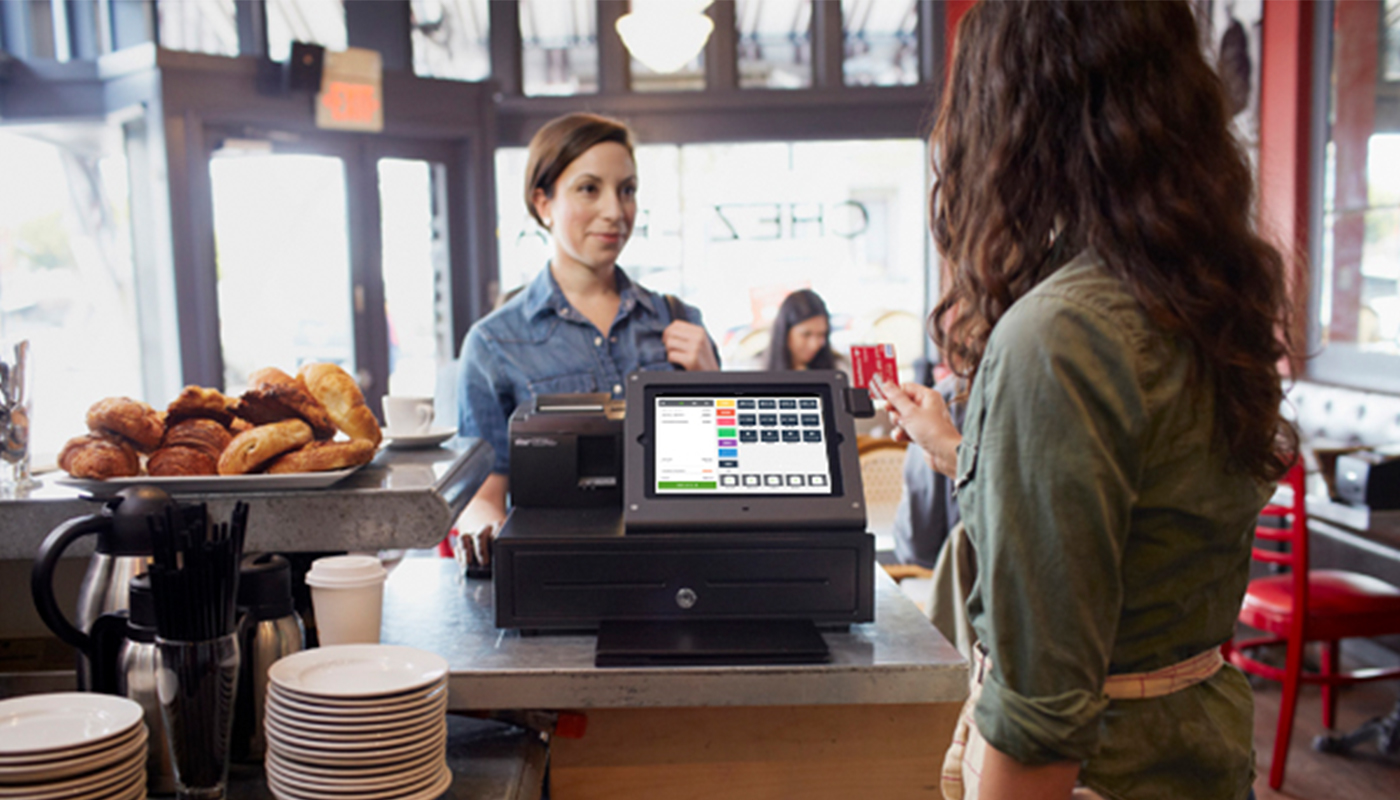
ROLE
–
Since the outset of the project in July 2013 I worked alongside two Program Managers, a UX Researcher, and a Lead Designer with support from the Merchant Design team. I executed journeys, wireframes, prototypes, and final designs of the iOS tablet application.
I designed and presented works to gain buy‐in from executives, senior stakeholders and the Merchant Design team throughout the project lifecycle. Up until June 2014 I led efforts to evolve the service and address customer pain‐points related to Discounts while working on the mobile Groupon Merchant app.
MARCH 2014 - JUNE 2014
To comply with my non-disclosure agreement, the actual object of my work can’t be disclosed and some of the following designs, numbers, text and context, have been modified, blurred or omitted on purpose. The information in this case study is my own and does not necessarily reflect the views of Groupon.
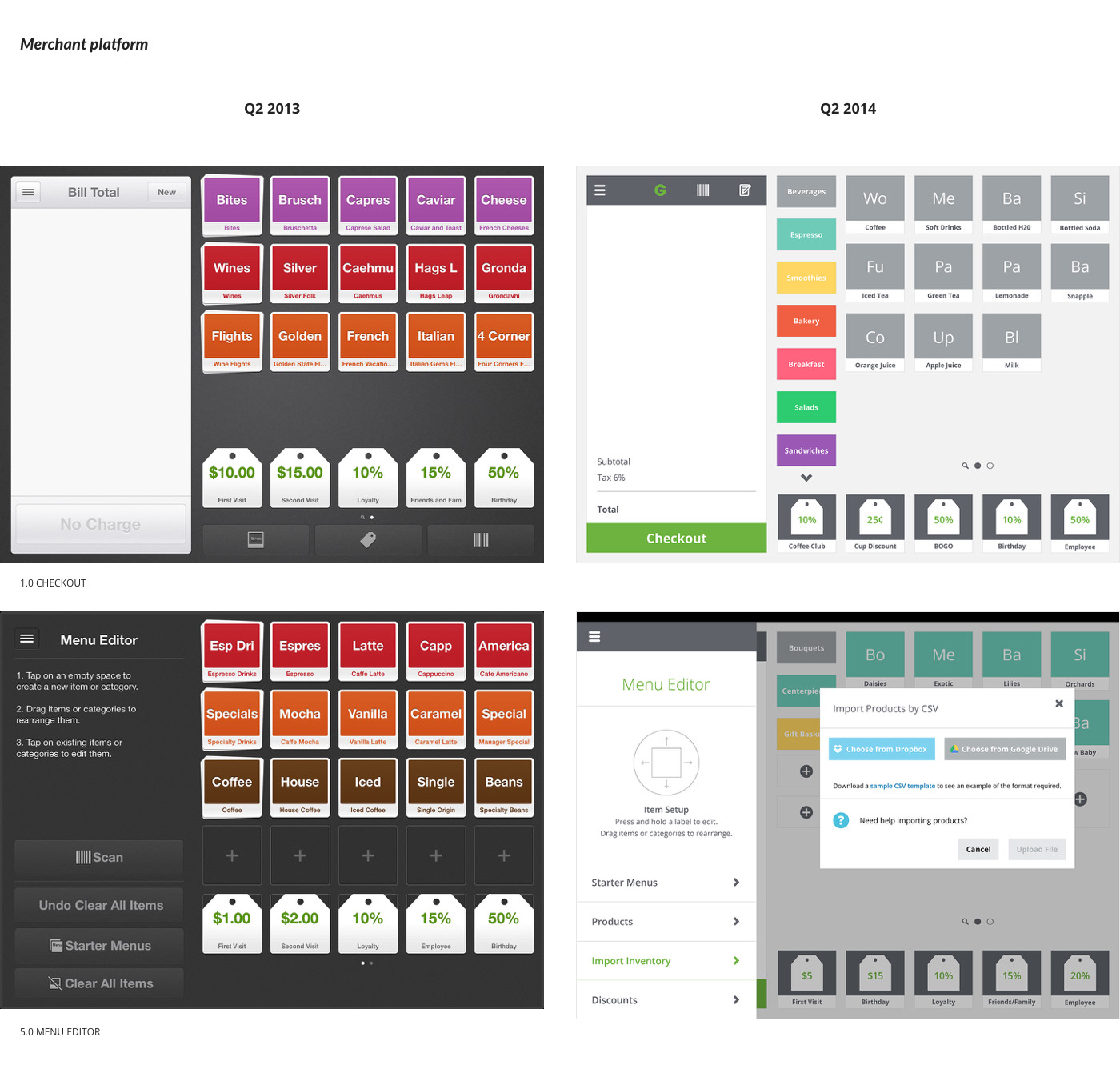
CHALLENGE
–
Simple but smarter
Although Groupon is well-known by cost-conscious consumers for its celebrated namesake daily deals, it has also been serving merchants for years. Merchants have been provided tools not only for deal publishing, but also for their redemption, for promotion, marketing, reservation, booking, user reviews, analytics, and accounting.
As a team we were tasked to solve one of the challenges Groupon faced and a key reason why many small business owners and retailers were soured on the daily deals platform: customers would come in, nameless and faceless entities brandishing their Groupon for a freebie or deeply discounted product or service, which they used one time and then often never returned.
Integrating a CRM module in the new platform, the idea was that merchants could begin to better track these customers, and create custom marketing campaigns using customer purchase history and other preferences.
Goals
• Help create deeper relationships between Merchants and their customers
• Simplify redemption and create a consistent customer experience
• Establish Groupon as a trusted business partner with full suite of small business solutions
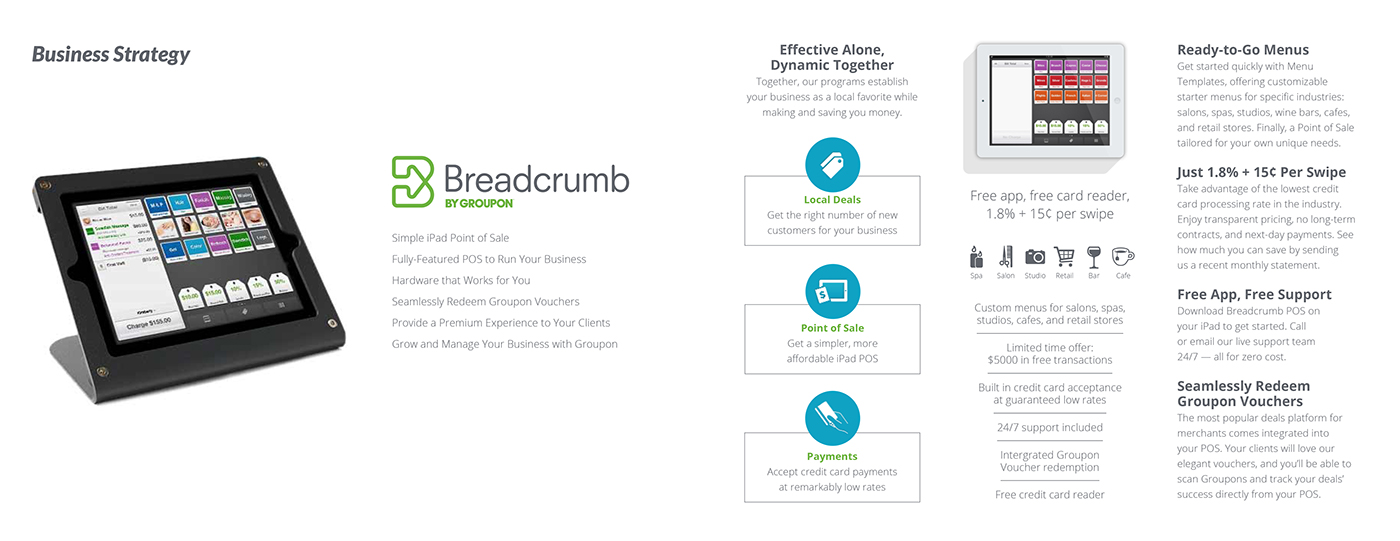

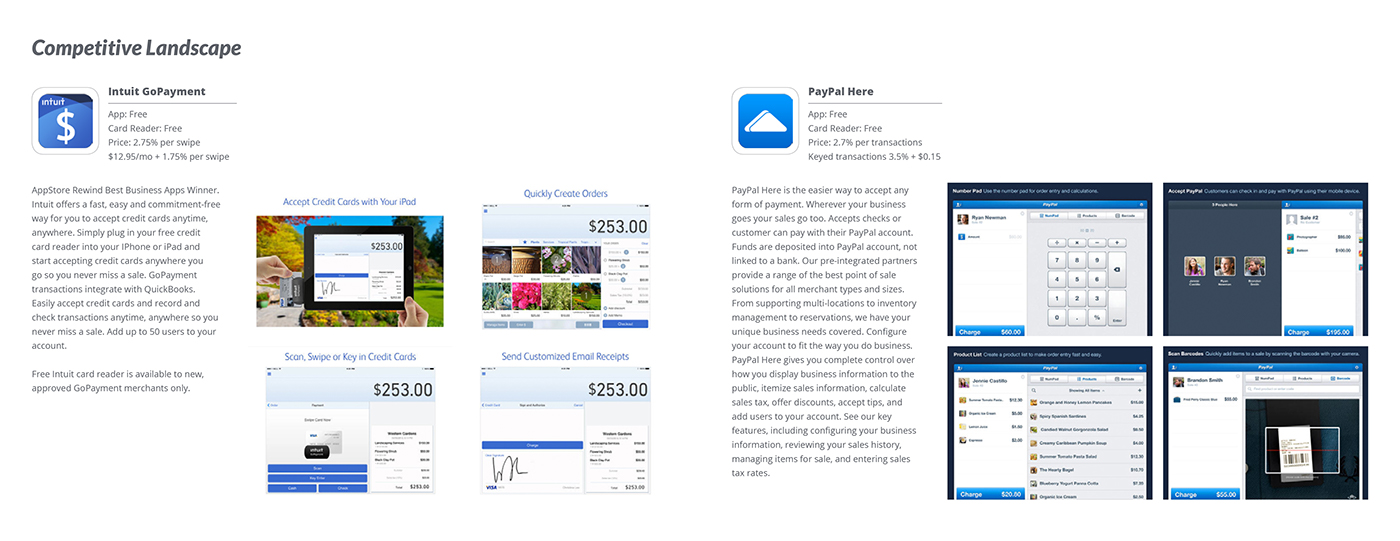
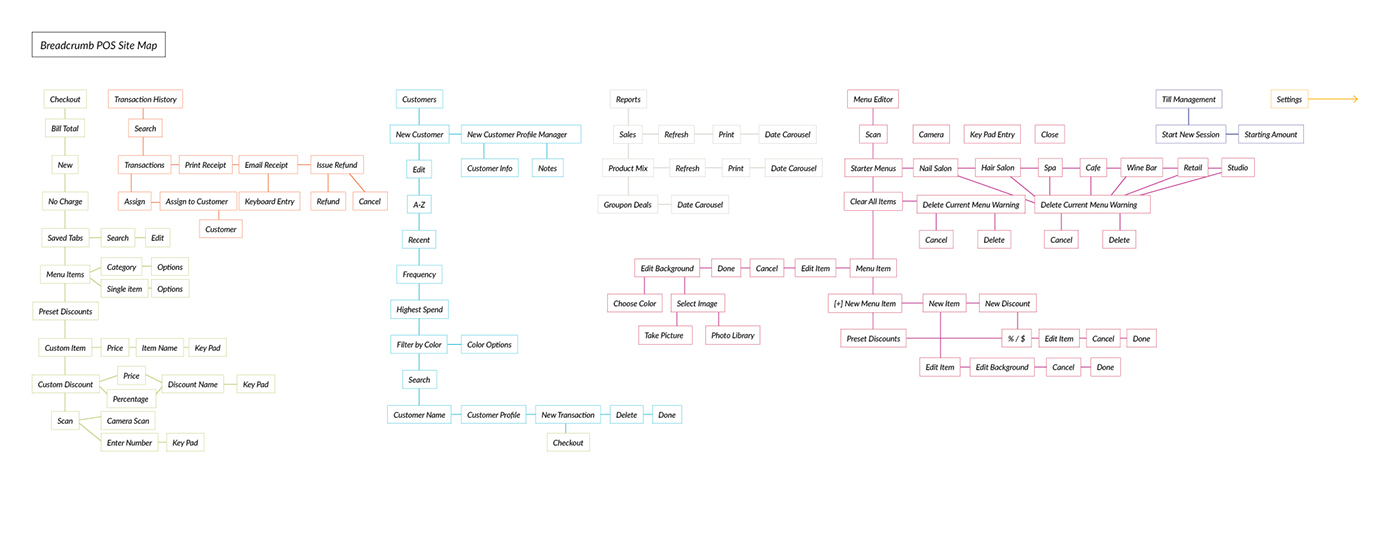
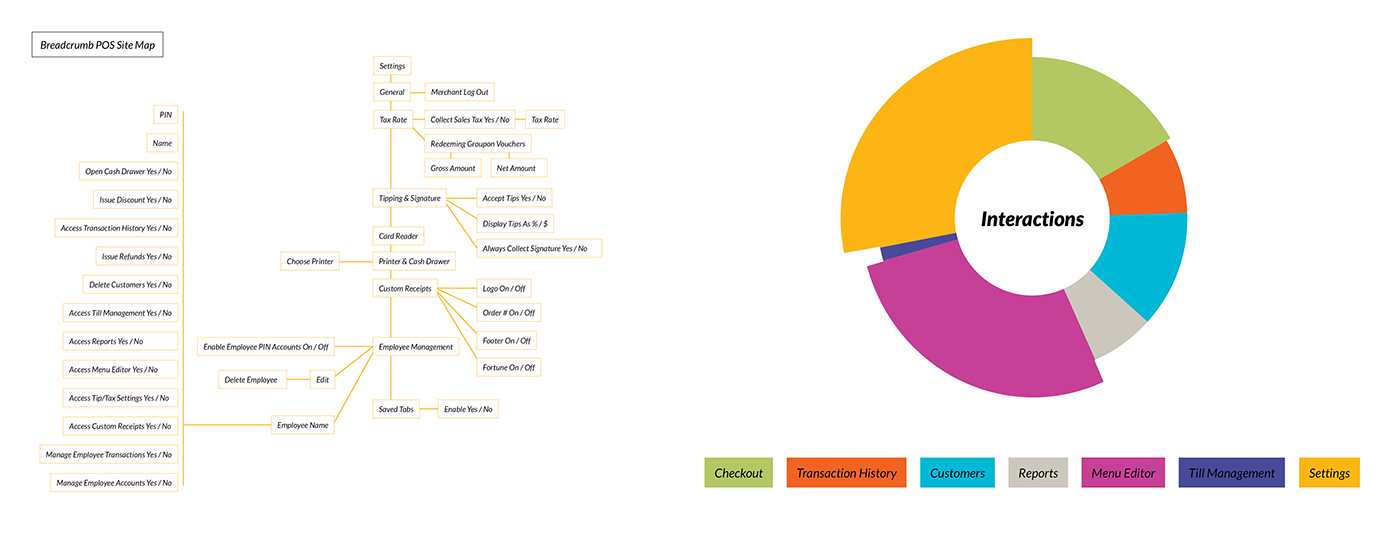
BRAINSTORMING
–
We started with work sessions to lay out the user’s journey from start to finish. Once the walls were full of screens, the team would start to incorporate “questions” and “research” stickies. The point being to figure out what we know and what we would need to research.
After the workshops, the team gathered the missing data and I translated the information into users stories. This overview of the user journey helped us to figure out the principal leaks in the funnel and biggest optimization opportunities.
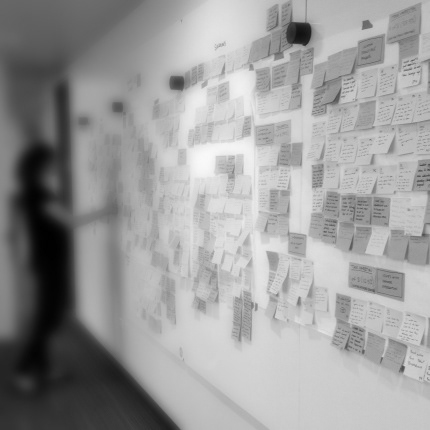
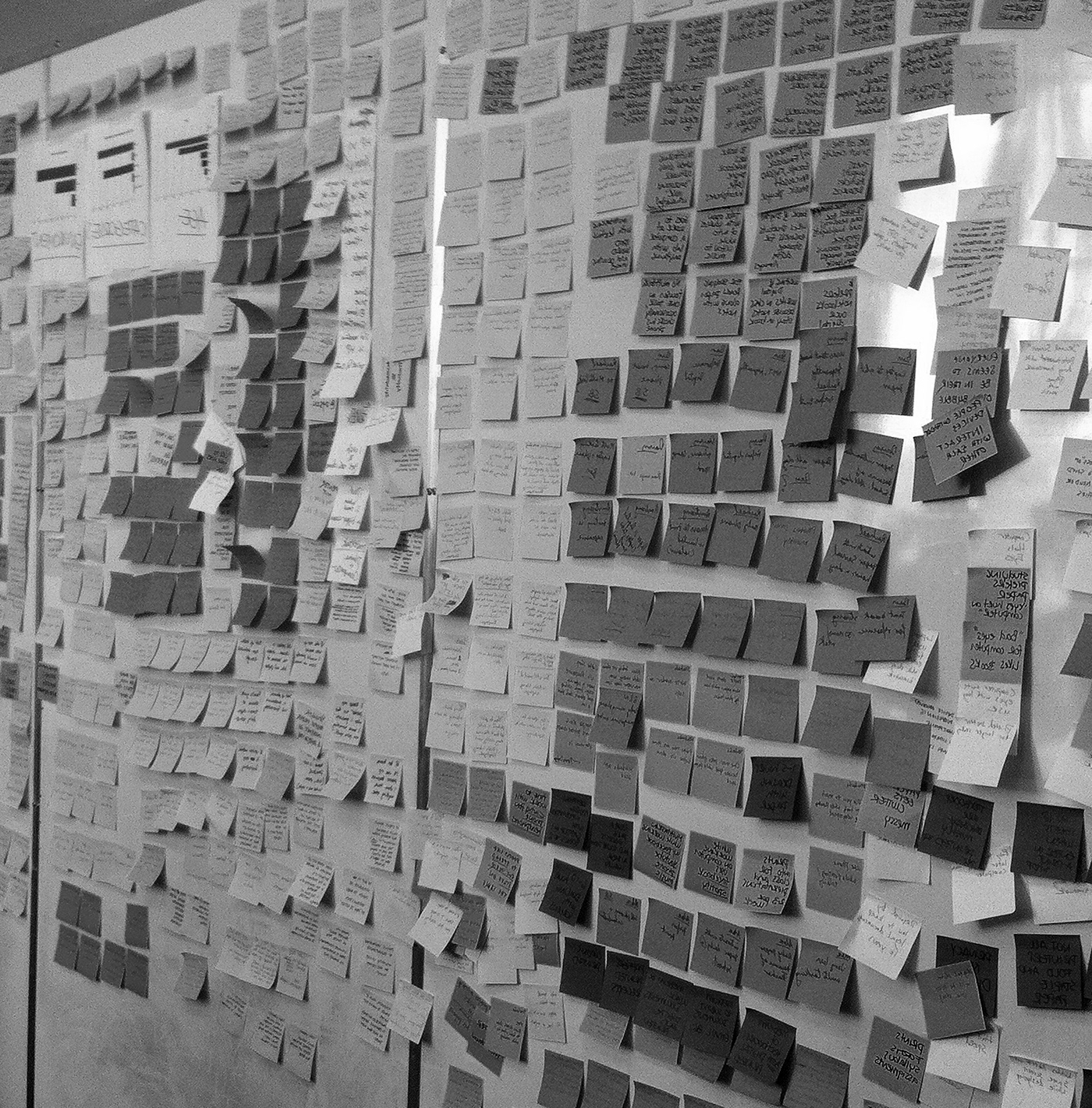
After preliminary research the next phase of our work was dedicated to concepting through solutions. Working alongside the UX researcher, the collected user research was distilled down and used alongside a core set of primary business categories to create personas.
Then, inspired by the Google design sprint, our team spent time creating concepts, diverging and converging to build experimental concepts that supported our goals:
• Help create deeper relationships between Merchants and their customers
• Simplify redemption and create a consistent customer experience
Finally, we prioritized those ideas and turned them into experiments to start the development phase.
Who are our primary users and what would they value?
Why will a user want to use this feature?
What will be their most common tasks?
Under what conditions, or in what contexts, will this feature be used?
Who are the primary users of this particular feature?

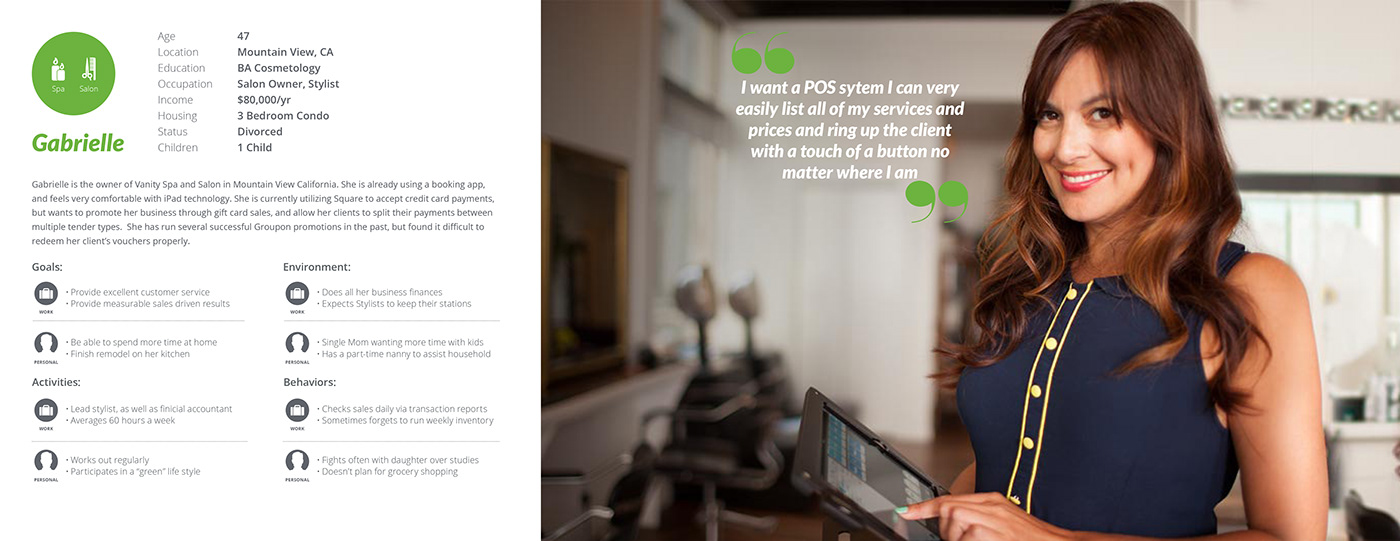
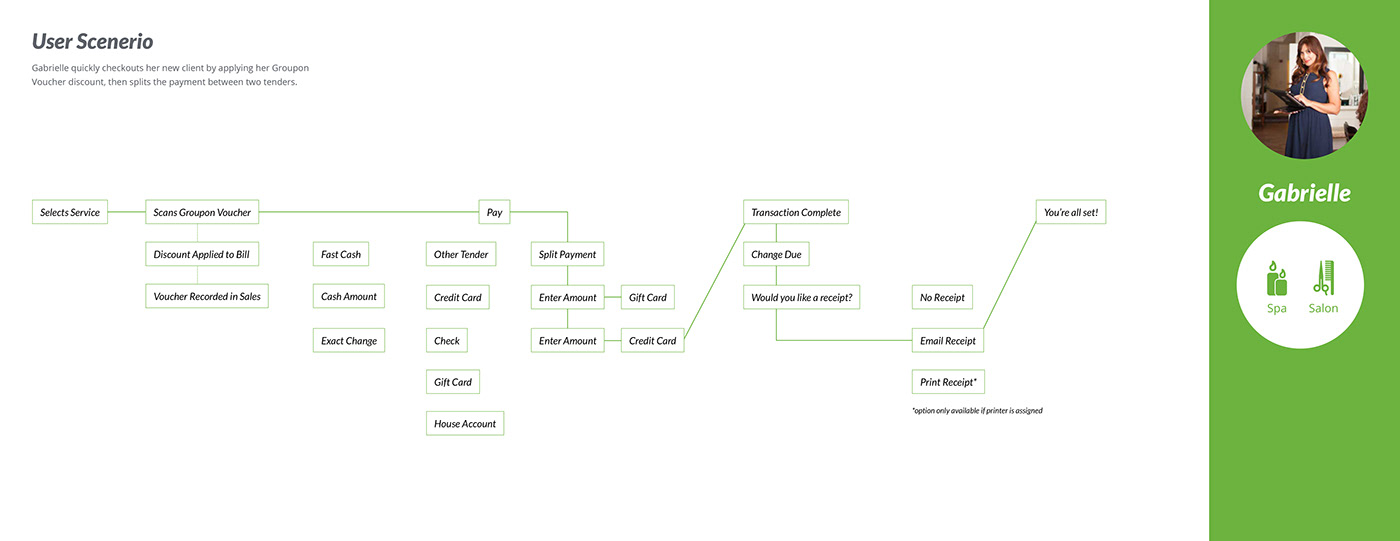
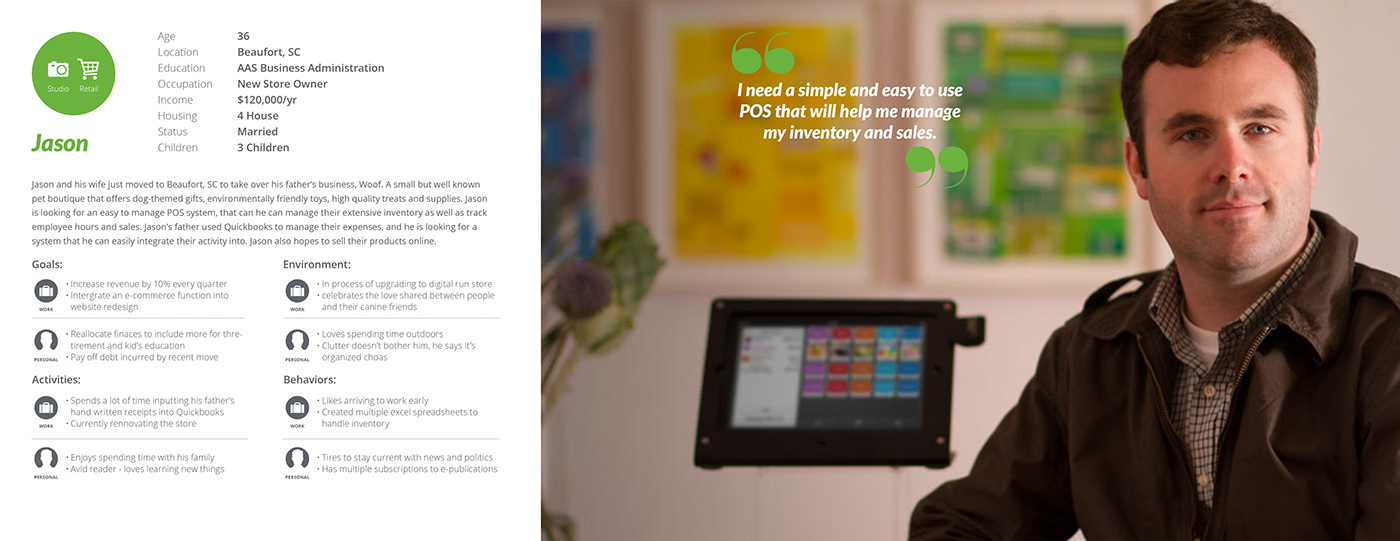
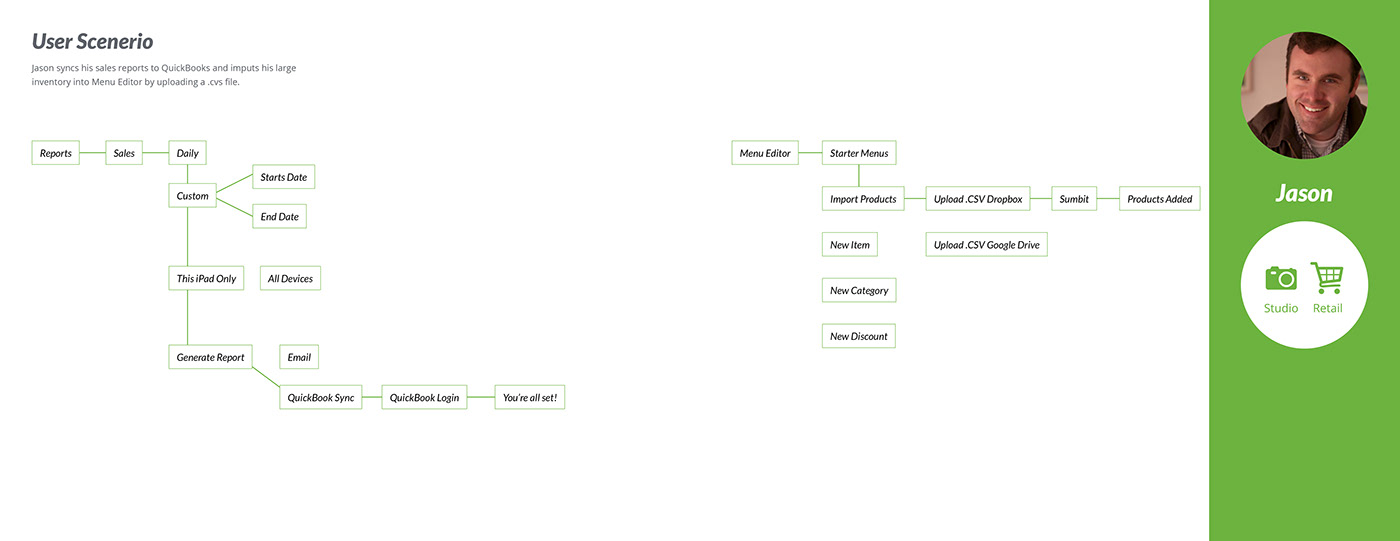
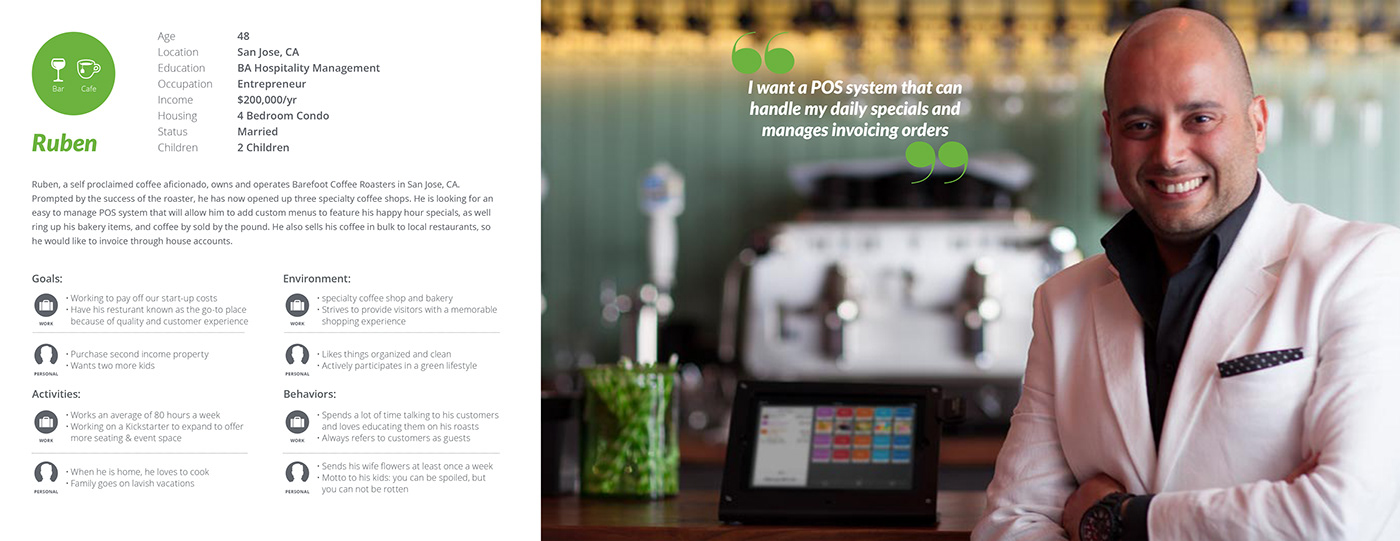
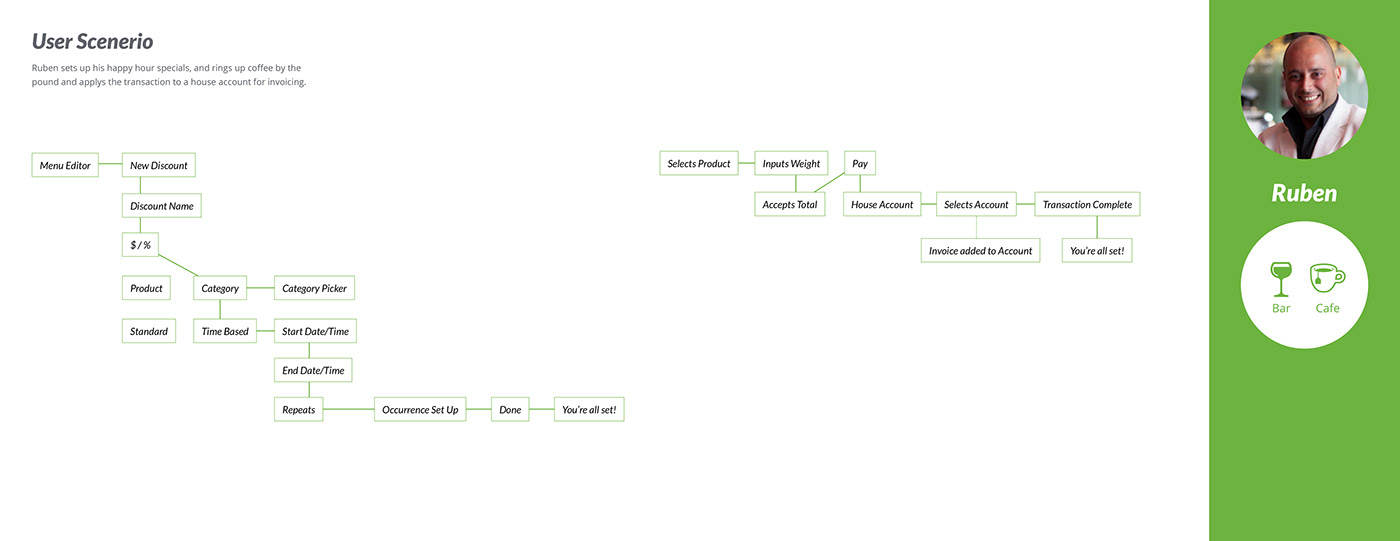
CONCEPT TO DESIGN
–
The brainstorming phase played a big role to generate experiment ideas that focus on solving the user’s pain points and not mindlessly attempt to drive growth. Nonetheless, to capture the essence of the proposed solutions and reaffirmed their potential, it is important to phrase the experiments as hypothesis.
Good hypotheses ensure a better design quality by framing the user experience around the success metrics while grounding the decisions in facts and data.
My process involved sketching and white‐boarding concepts and flows then translating these directly into hi‐fidelity design mocks. Since I was working with many existing design patterns established by the current rebrand efforts, it was relatively easy to move straight into hi‐fidelity designs.
My next step involved slicing the comps and piecing them together with InVision into a prototype.
I found that prototyping was the most effective way to gain meaningful feedback – I was able to easily distribute these as videos and recycle them for usability testing. This also allowed me to quickly explore, iterate and validate solutions.
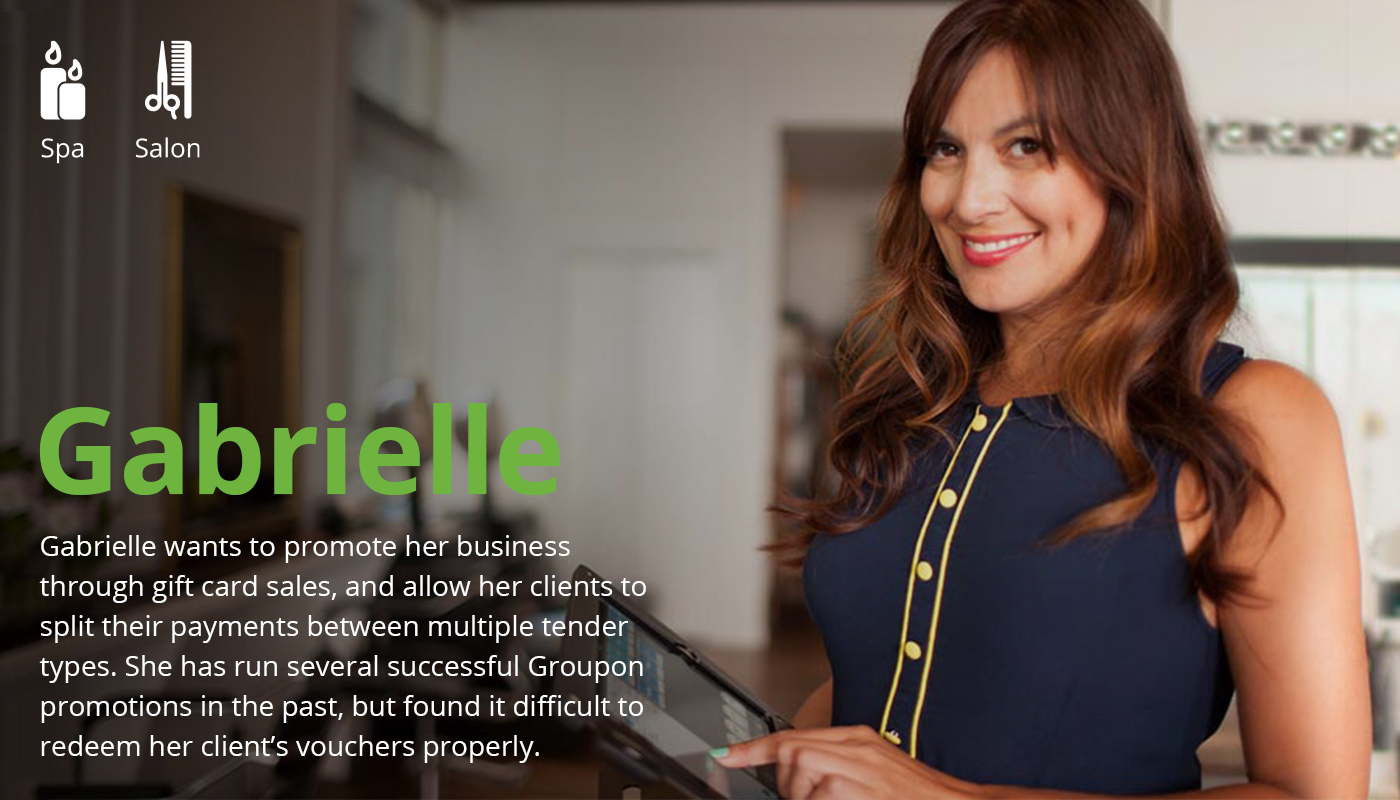
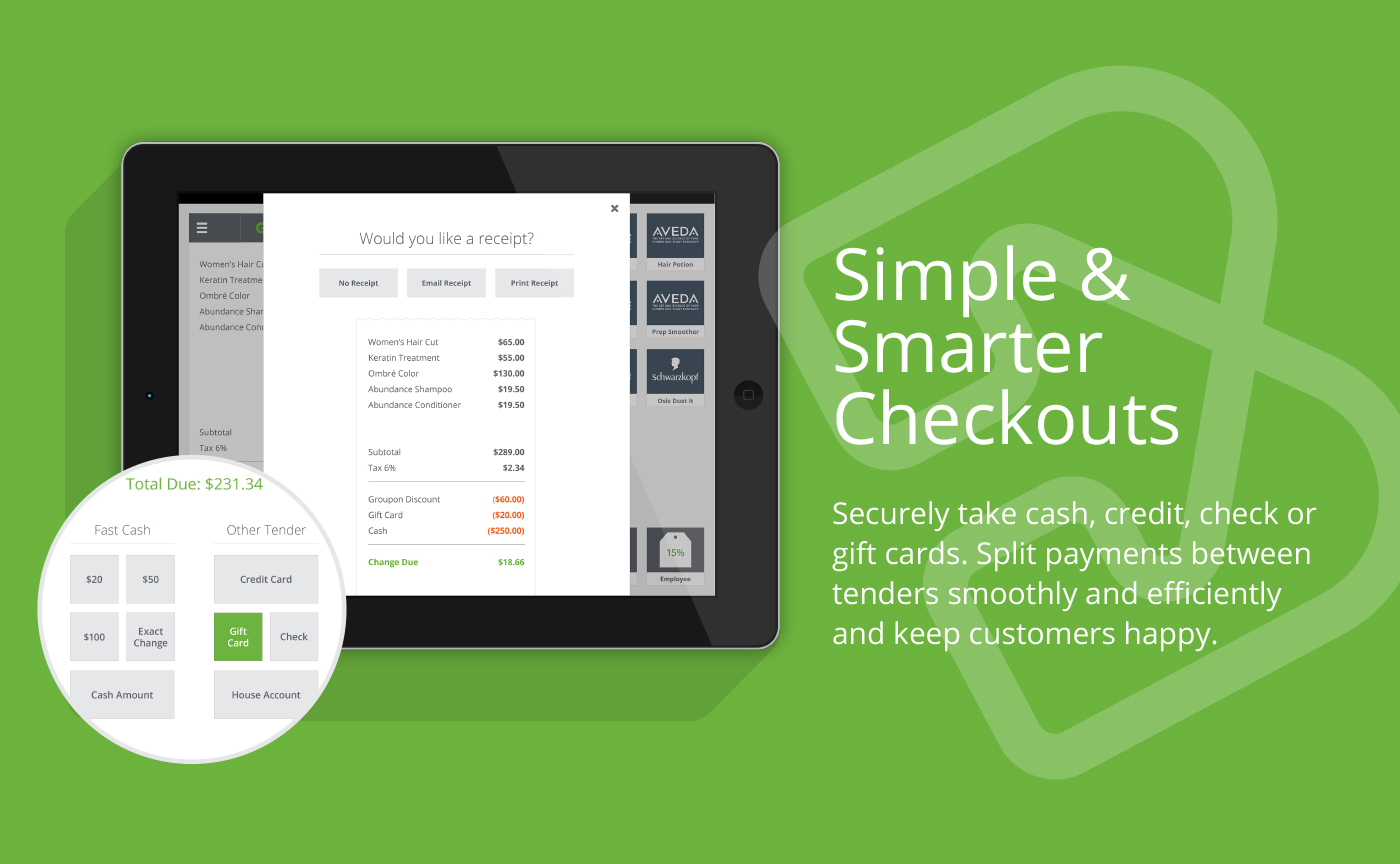
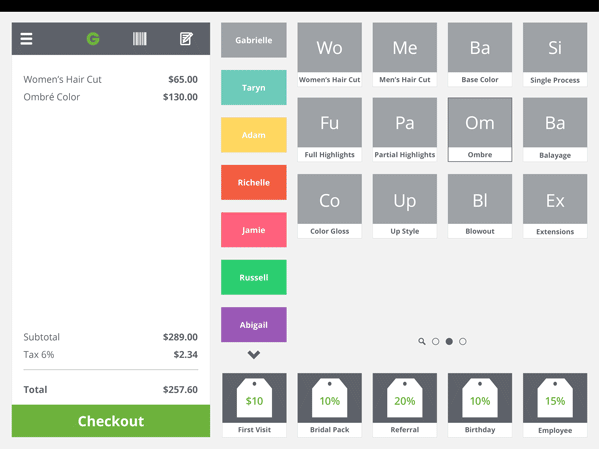
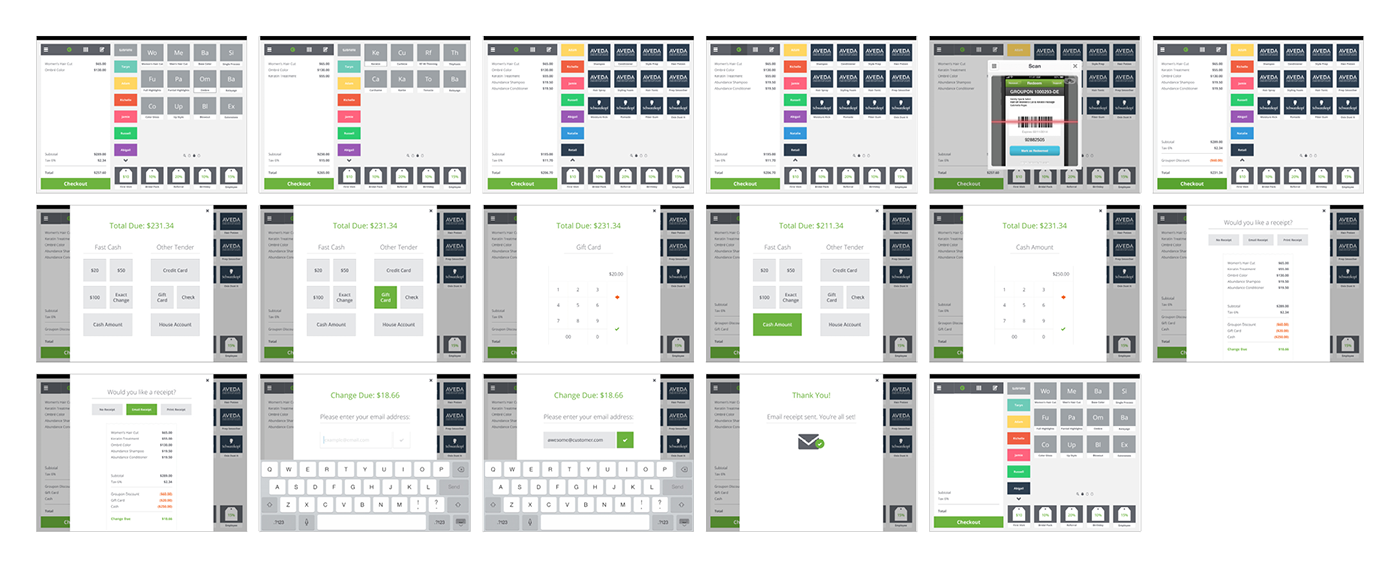
CHECKOUT FLOW demonstrating Groupon redemption, split payments
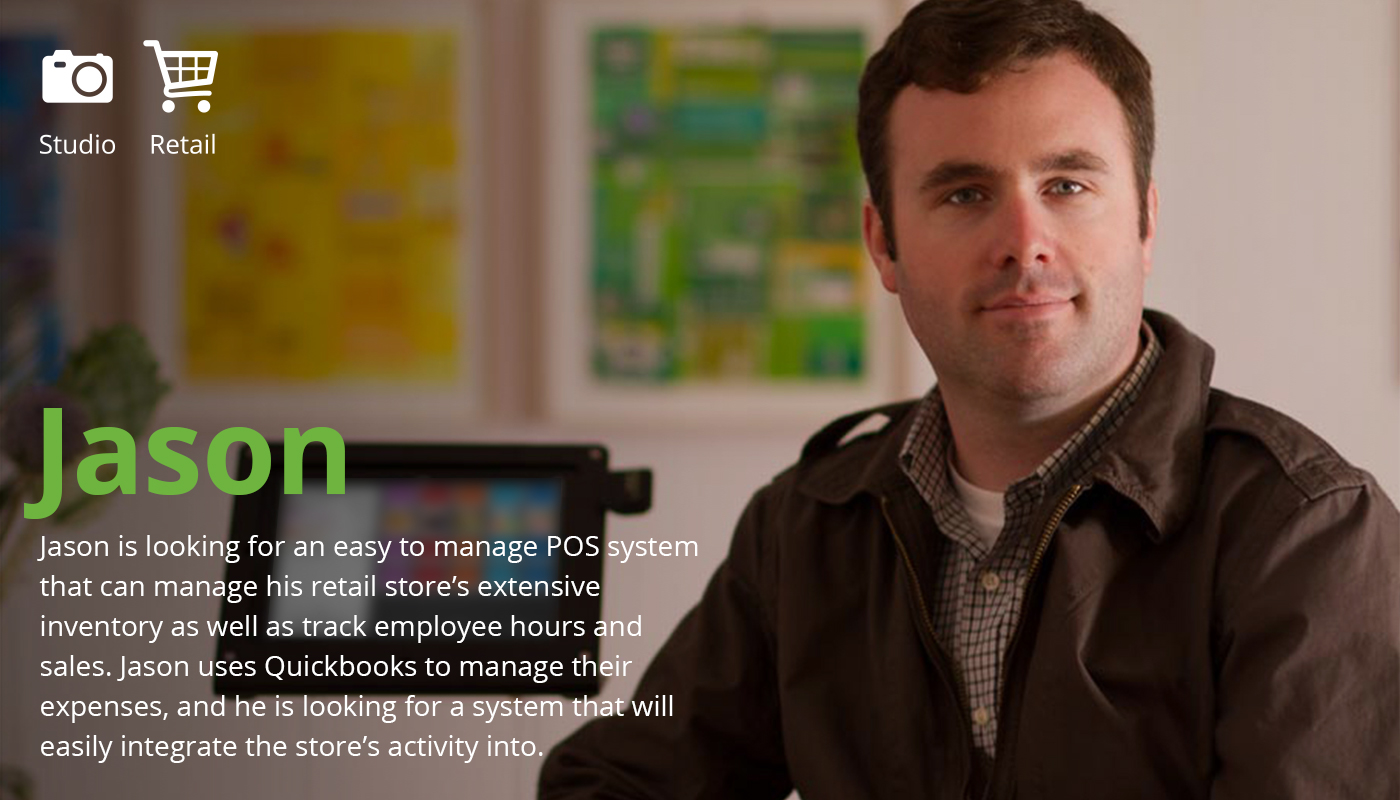

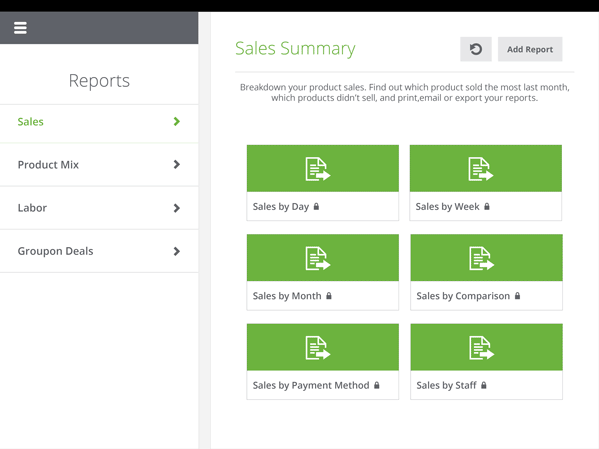
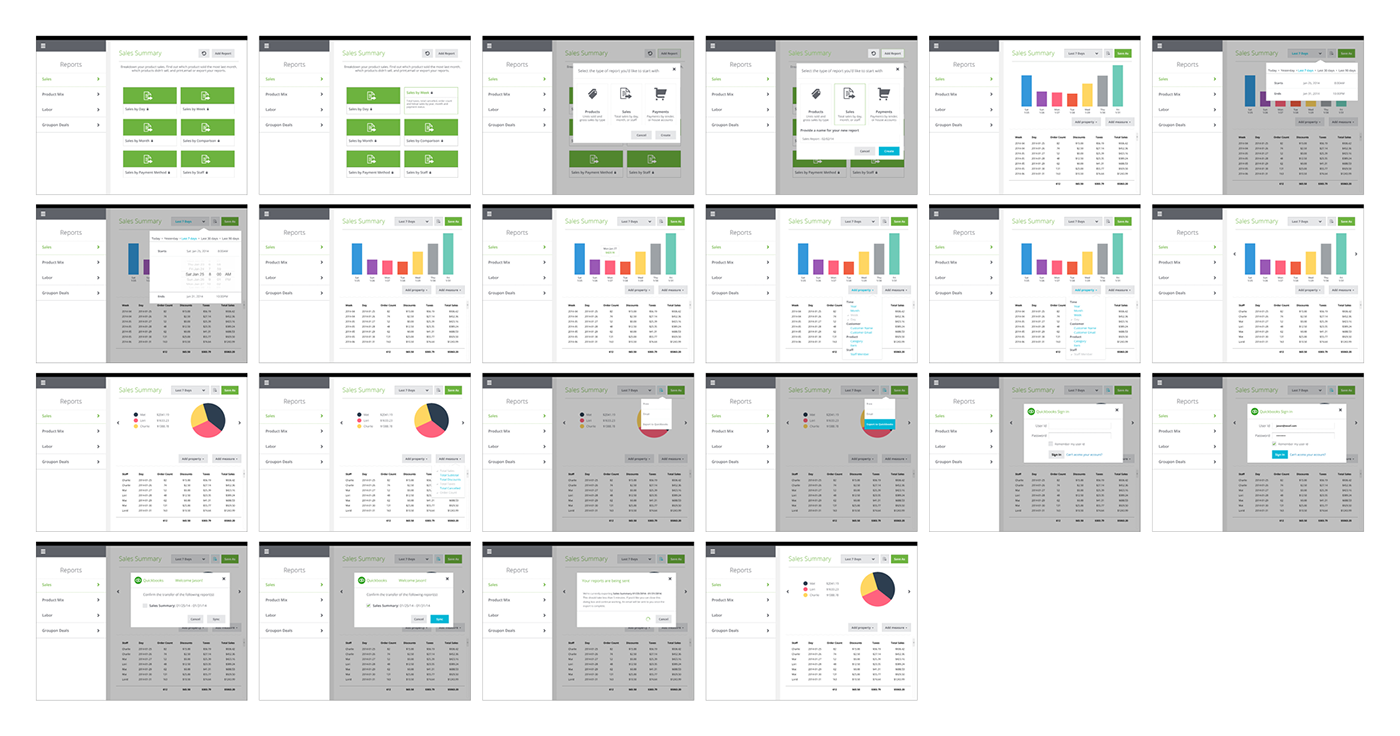
SALES REPORTING FLOW (v1) screens demonstrating the options merchants can use in the new reporting platform.
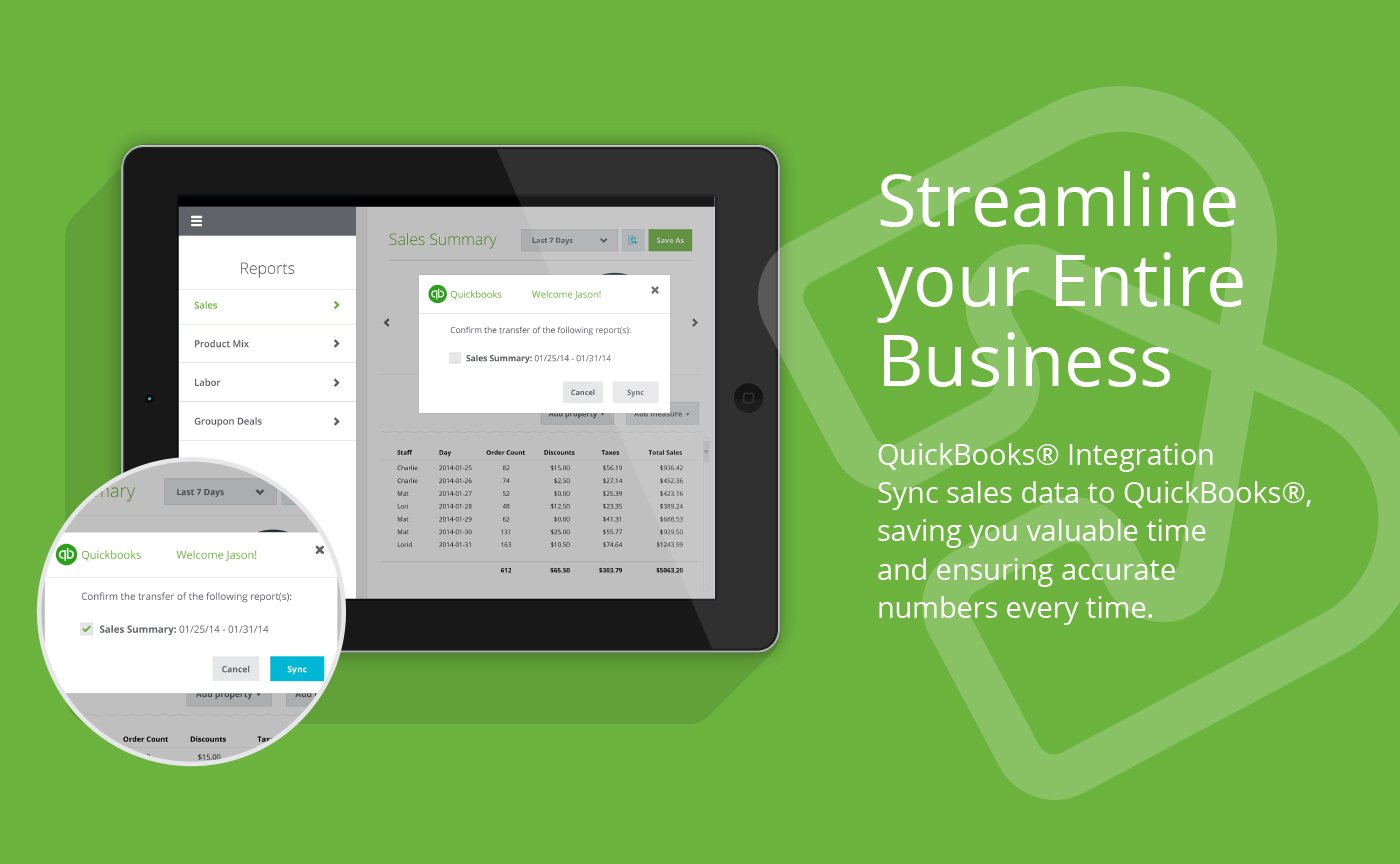
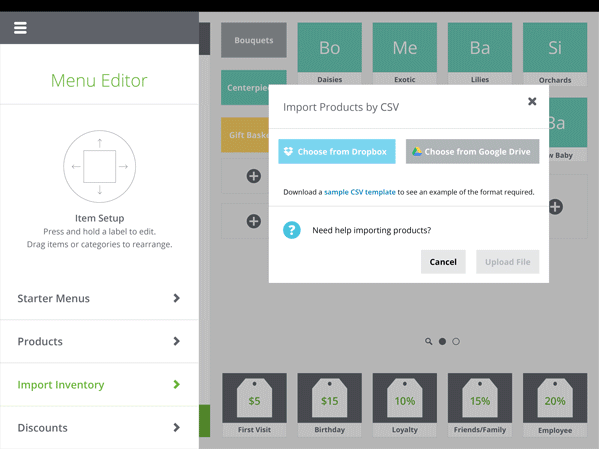
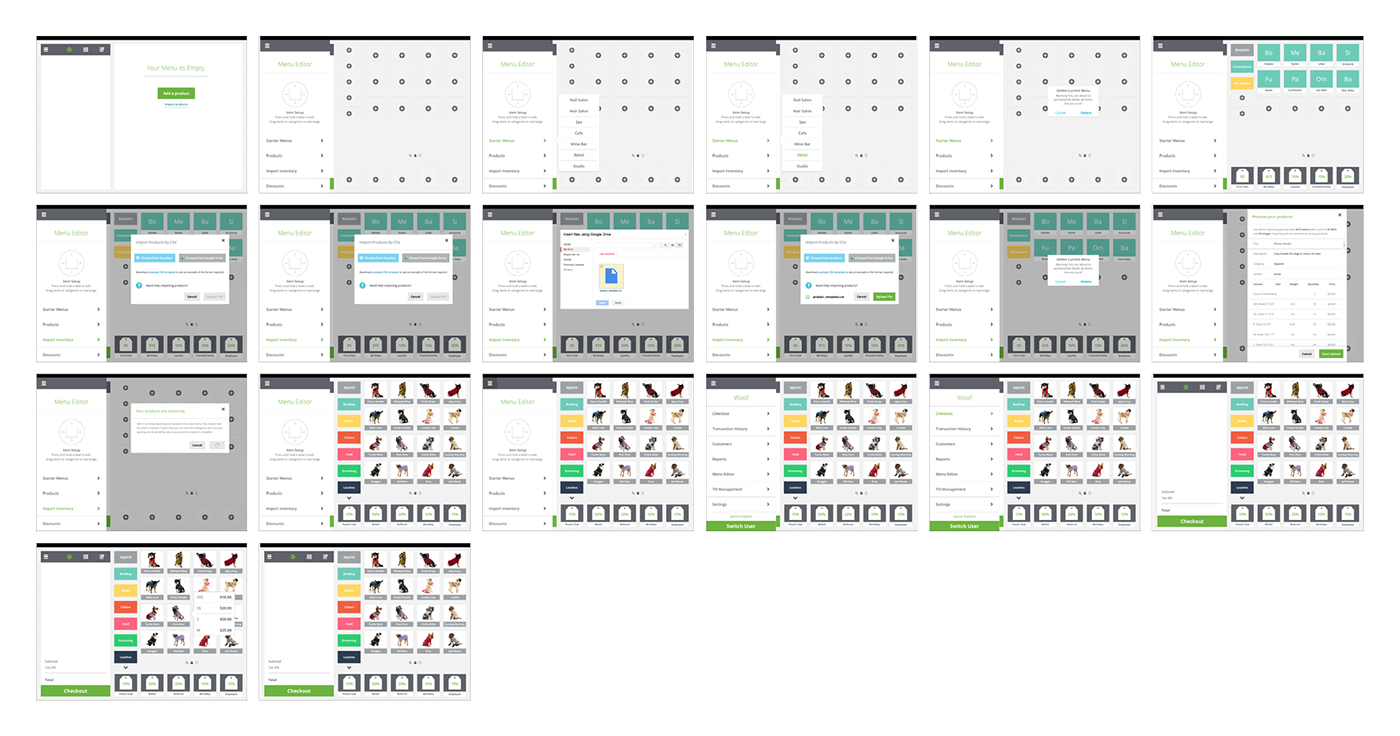
INVENTORY MANAGEMENT (v2) screens providing the userflow for inventory management control.
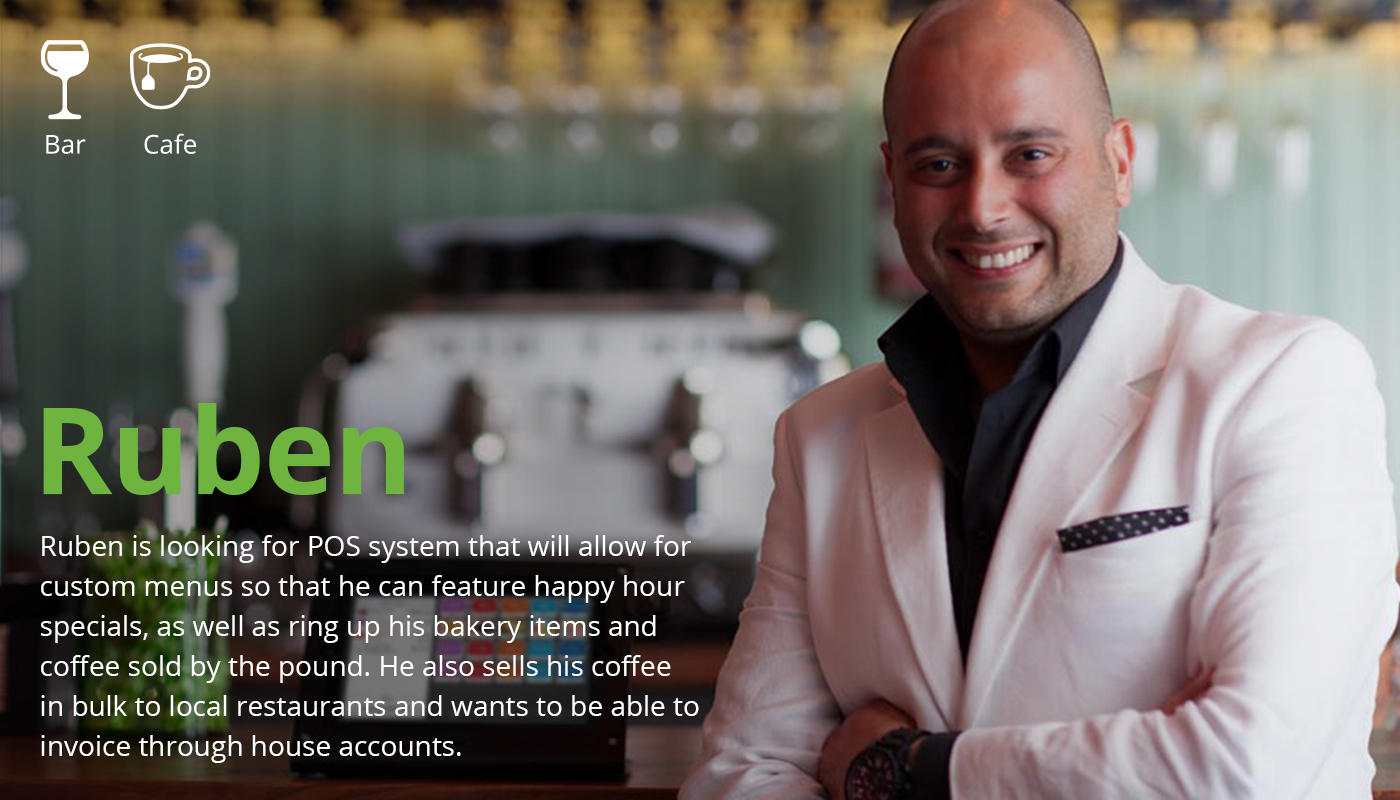
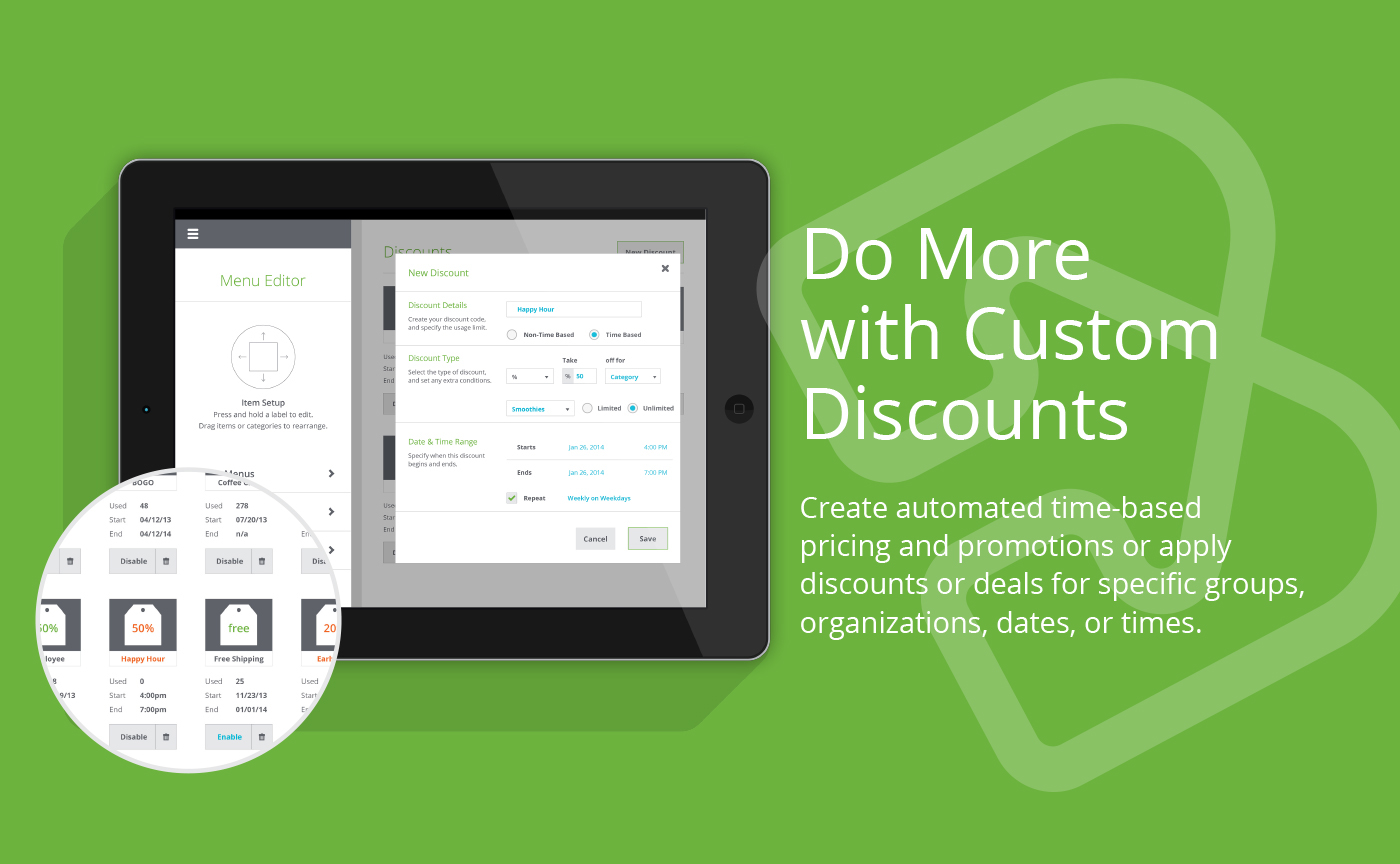
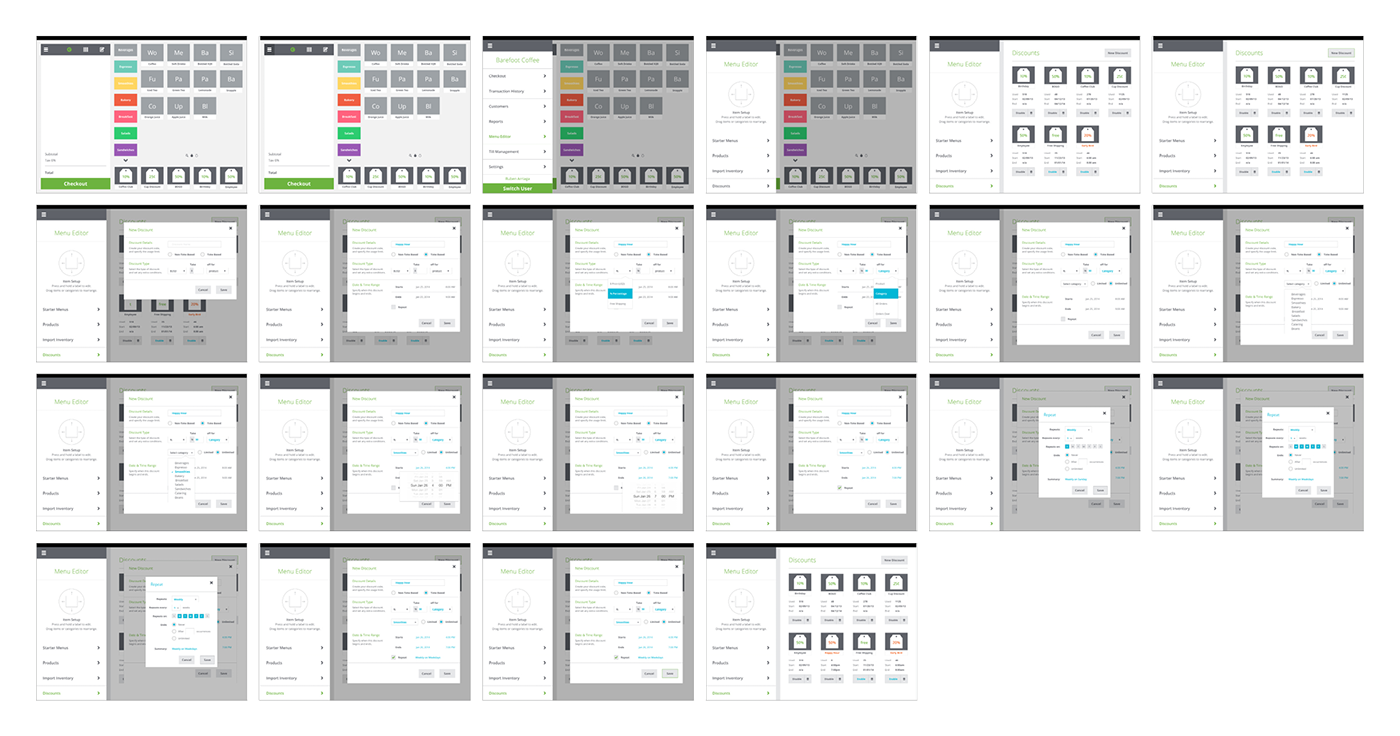
CUSTOM DISCOUNTS (v1) screens demonstrating the userflow for adding and applying custom discounts, like happy hour, to specific times and/or days of the week.
IN RETROSPECT
–
Working in Groupon's Merchant product team had a huge contributor to my product design education. over the course of two years, I learned new processes and refined my overall comprehension of product design for the digital medium.
Moreover, I believe that the use of hypothesis, experimentations, success metrics and fast idea generation are not exclusive of growth design but important principles and techniques that can be applied in any product design methods to create great solutions.

